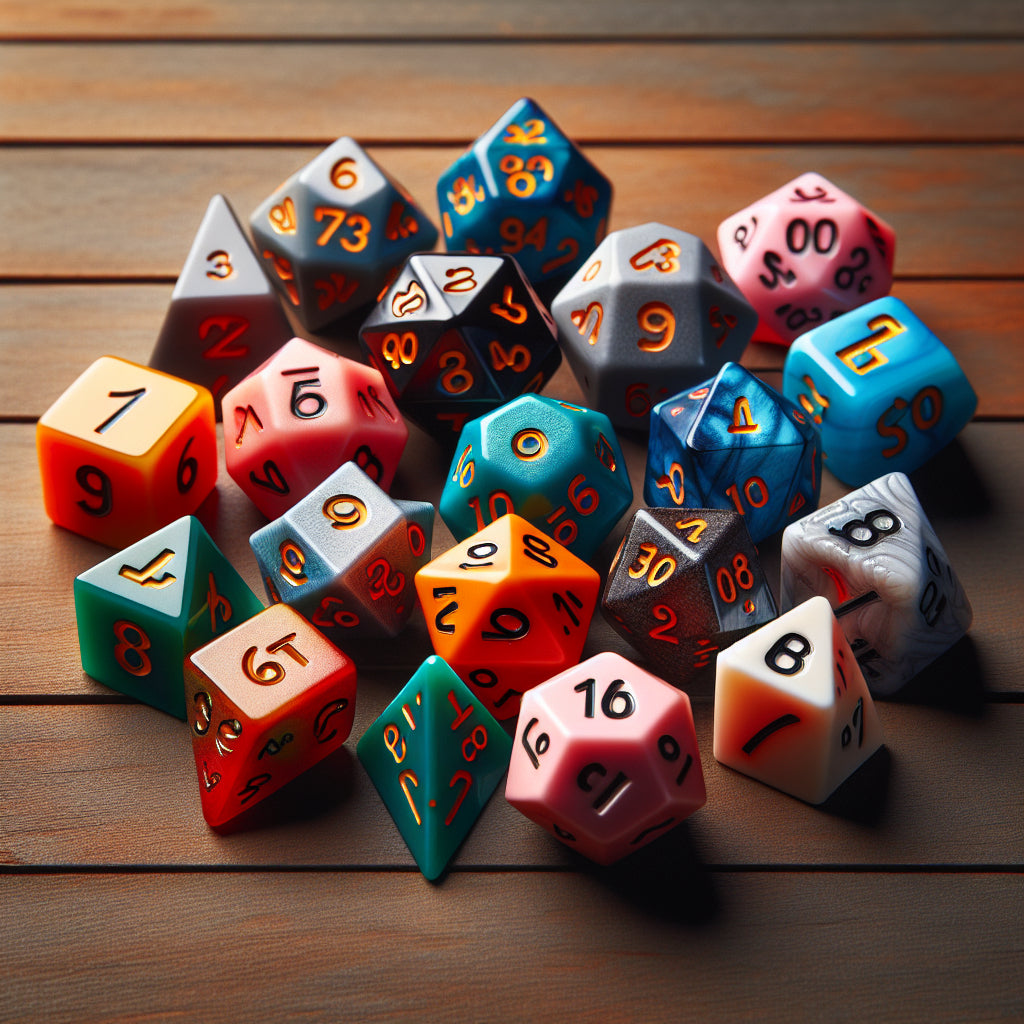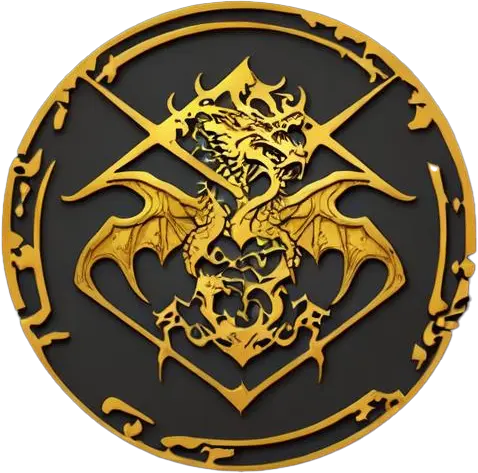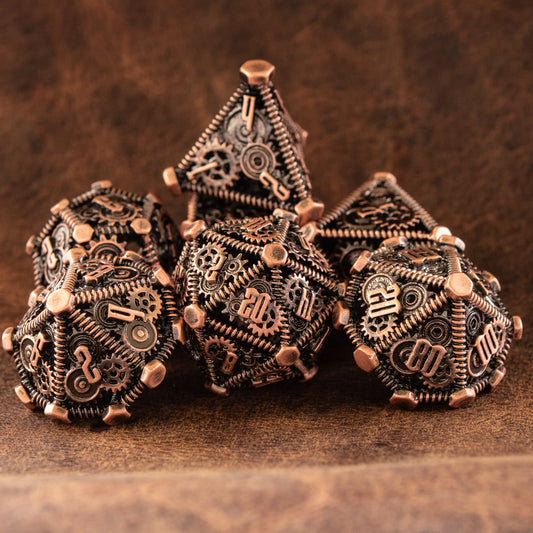
Understanding D&D Dice: What Are They Used For?
Share
Understanding D&D Dice: What Are They Used For?
Dive into the Mystical World of Dungeons & Dragons (D&D) Where Dice Decide the Fate of Your Adventures
Welcome adventurers! In this guide, we will explore the essential role of D&D dice, their various types, and how they are used in gameplay. Whether you're a seasoned Dungeon Master (DM) or a novice player, understanding the mechanics and uses of these polyhedral dice will enhance your D&D experience.
What Are D&D Dice?
Definition
D&D dice, often referred to as polyhedral dice, are a set of seven distinct dice used in the role-playing game Dungeons & Dragons. Each die has a different number of sides and is used to determine the outcomes of various in-game events, from combat to skill checks.
History and Evolution
The history of D&D dice dates back to the game's inception in the 1970s. Initially, players used standard six-sided dice (d6), but as the game evolved, so did the need for more diverse dice to handle the complexity of the rules. Today, the standard set includes seven dice: d4, d6, d8, d10, d12, d20, and a percentile die (d%).
The Standard D&D Dice Set
Overview
A standard D&D dice set consists of seven pieces, each with a unique shape and purpose. These dice are critical tools that bring the game to life, determining the success or failure of actions taken by characters.
Dice Shapes and Names
- d4 (Tetrahedron): A four-sided die, often resembling a pyramid.
- d6 (Cube): A six-sided die, familiar to most as the traditional gaming die.
- d8 (Octahedron): An eight-sided die, shaped like two pyramids base-to-base.
- d10 (Pentagonal Trapezohedron): A ten-sided die, used in pairs for percentile rolls.
- d12 (Dodecahedron): A twelve-sided die, often used for high-damage rolls.
- d20 (Icosahedron): A twenty-sided die, the most iconic and frequently used in D&D.
- Percentile Die (d%): A special ten-sided die marked in increments of 10, used in combination with a d10 to generate percentages.
List of Dice
- d4: Used for minor damage rolls, such as small weapons or spells.
- d6: Commonly used for rolling character stats and damage for smaller weapons.
- d8: Often used for damage rolls for larger weapons.
- d10: Used for damage rolls and percentile calculations.
- d12: Typically used for damage rolls for heavy weapons.
- d20: Used for attack rolls, ability checks, and saving throws.
- Percentile Die (d%): Used in combination with the d10 for generating percentages.
Primary Uses of Each Die
d4
The d4 is typically used for damage rolls for the smallest weapons and spells. Its unique pyramid shape makes it easily recognizable and essential for determining outcomes in various scenarios.
d6
The d6 is a versatile die used for rolling character stats during character creation and for damage rolls for smaller weapons. Its familiar cube shape makes it one of the most commonly used dice in D&D and other tabletop games.
d8
The d8 is commonly used for damage rolls for larger weapons. Its octahedral shape allows for a wider range of outcomes, making it ideal for medium to high-damage attacks.
d10
The d10 is used for damage rolls and percentile calculations. When paired with the percentile die (d%), it can generate numbers from 1 to 100, which is useful for determining probabilities and outcomes in more complex scenarios.
d12
The d12 is typically used for damage rolls for heavy weapons. Its dodecahedral shape makes it less common but crucial for high-impact attacks, often wielded by the strongest characters.
d20
The d20 is the cornerstone of D&D gameplay, used for attack rolls, ability checks, and saving throws. Its icosahedral shape provides a wide range of outcomes, making it the most exciting and frequently used die in the game.
Percentile Die (d%)
The percentile die, used in combination with the d10, is essential for generating percentages. This pair is often used to determine the success of actions with a probabilistic element, adding an extra layer of depth to the game.
Dice Rolls in Gameplay
Mechanics
Dice rolls in D&D are fundamental to the game's mechanics. When a player attempts an action, they roll the appropriate die and add relevant modifiers based on their character's abilities. The result is then compared to a target number set by the DM to determine success or failure.
Examples
- Combat: During combat, players roll a d20 to determine if their attack hits the enemy. If successful, they then roll the appropriate die (e.g., d8 for a longsword) to determine damage.
- Skill Checks: When a character attempts a skill check, such as picking a lock, they roll a d20 and add their skill modifier. The result is compared to the difficulty class (DC) of the task.
- Saving Throws: To resist a spell or avoid a trap, players roll a d20 and add their saving throw modifier. The result determines if they successfully resist the effect.
Understanding the role and mechanics of D&D dice is crucial for any player. These polyhedral tools are not just random number generators; they are the keys to unlocking the epic tales and adventures that define Dungeons & Dragons.
Advanced Uses of D&D Dice
Combat
Combat in Dungeons & Dragons is a thrilling aspect where dice play a critical role. The d20 is the most frequently used die in combat, determining the success of attack rolls. Players roll a d20 to see if their attack hits the enemy, considering any modifiers and the opponent's Armor Class (AC). If the attack is successful, players then roll the appropriate damage die (e.g., d6, d8, d10, d12) based on the weapon or spell used. This process adds an element of unpredictability and excitement to each encounter, making every battle unique.
Skill Checks
Skill checks are another fundamental aspect of D&D gameplay where dice determine the outcome of various actions. When a character attempts a task, such as climbing a wall or persuading a guard, they roll a d20 and add their relevant skill modifier. The result is compared to a Difficulty Class (DC) set by the Dungeon Master (DM). This mechanic ensures that character abilities and player decisions significantly impact the game's narrative, creating a dynamic and immersive experience.
Spells and Magic
The role of dice in casting spells and determining their effects is crucial in D&D. Spellcasters often roll dice to determine the amount of damage dealt by a spell or the number of targets affected. For example, a Fireball spell might require rolling multiple d6s to calculate total damage. Additionally, some spells require saving throws, where the target rolls a d20 to resist the spell's effects. This integration of dice in spellcasting adds depth to magical encounters and highlights the strategic elements of the game.
Enhancing Your Gameplay with Dice
Dice Accessories
To manage and store your dice effectively, consider investing in useful accessories. Dice trays and towers can help keep rolls contained and prevent dice from scattering across the table. Dice bags and boxes offer convenient storage solutions, ensuring your dice are organized and protected. These accessories not only enhance the practical aspects of gameplay but also add a touch of personal style to your gaming setup.
Dice Etiquette
Practicing good dice etiquette is essential for maintaining a respectful and enjoyable gaming environment. Always roll your dice in a designated area to avoid disrupting the game. Announce your rolls clearly and allow the DM to verify the results if necessary. Additionally, avoid manipulating or re-rolling dice without permission, as this can undermine the integrity of the game. Following these best practices ensures a fair and smooth gaming experience for everyone involved.
Online Dice Rollers
In the digital age, online dice rollers have become a convenient tool for D&D players. These digital tools simulate the roll of physical dice, providing quick and accurate results. Online dice rollers are particularly useful for virtual gaming sessions, where players and DMs can share results in real-time. Many online platforms offer customizable options, allowing users to select specific dice types and modifiers. Incorporating online dice rollers into your gameplay can streamline the process and enhance the overall experience.
Collecting and Customizing Dice
Collecting
For many D&D enthusiasts, collecting unique and rare dice sets is a rewarding hobby. Dice come in various materials, including plastic, metal, wood, and even gemstone, each offering a distinct aesthetic and tactile experience. Seek out limited edition sets, handcrafted dice, or those with intricate designs to add to your collection. Exploring different vendors and attending gaming conventions can also provide opportunities to discover exclusive dice sets.
Customization
Customizing your dice allows you to express your personal style and preferences. Many companies offer options for custom engraving, color combinations, and even personalized symbols or logos. Customized dice not only enhance your gaming experience but also make for memorable keepsakes or gifts for fellow players. Consider experimenting with different customization options to create a set that truly reflects your unique character and gaming persona.
Dice Materials
D&D dice are available in a variety of materials, each with its own advantages. Plastic dice are lightweight, affordable, and come in a wide range of colors and styles. Metal dice are heavier, providing a satisfying heft and durability, though they can be more expensive. Wooden dice offer a natural, rustic feel, while gemstone dice are prized for their beauty and rarity. When selecting dice, consider the material that best suits your preferences and gaming needs.
Conclusion
Summary
D&D dice are indispensable tools that bring the game to life, determining the outcomes of combat, skill checks, spells, and more. Understanding the mechanics and uses of each die enhances your gameplay experience, allowing you to fully immerse yourself in the world of Dungeons & Dragons. From the iconic d20 to the versatile d10, each die plays a crucial role in shaping the narrative and driving the action.
Call to Action
We encourage you to explore different dice sets and accessories to find the perfect combination for your adventures. Whether you're a seasoned player or new to the game, investing in quality dice and understanding their uses will elevate your D&D experience. So gather your party, roll those dice, and embark on epic quests that will be remembered for years to come. Happy adventuring!

